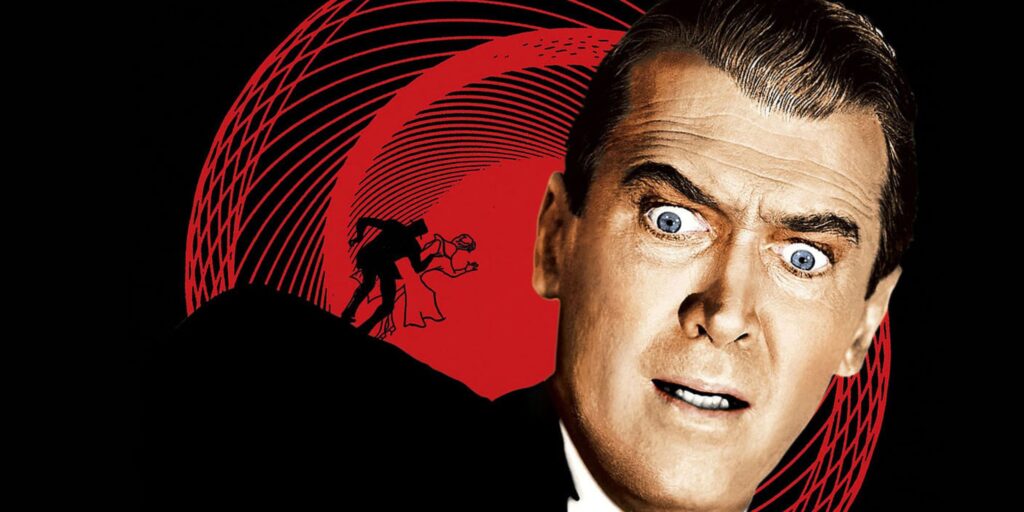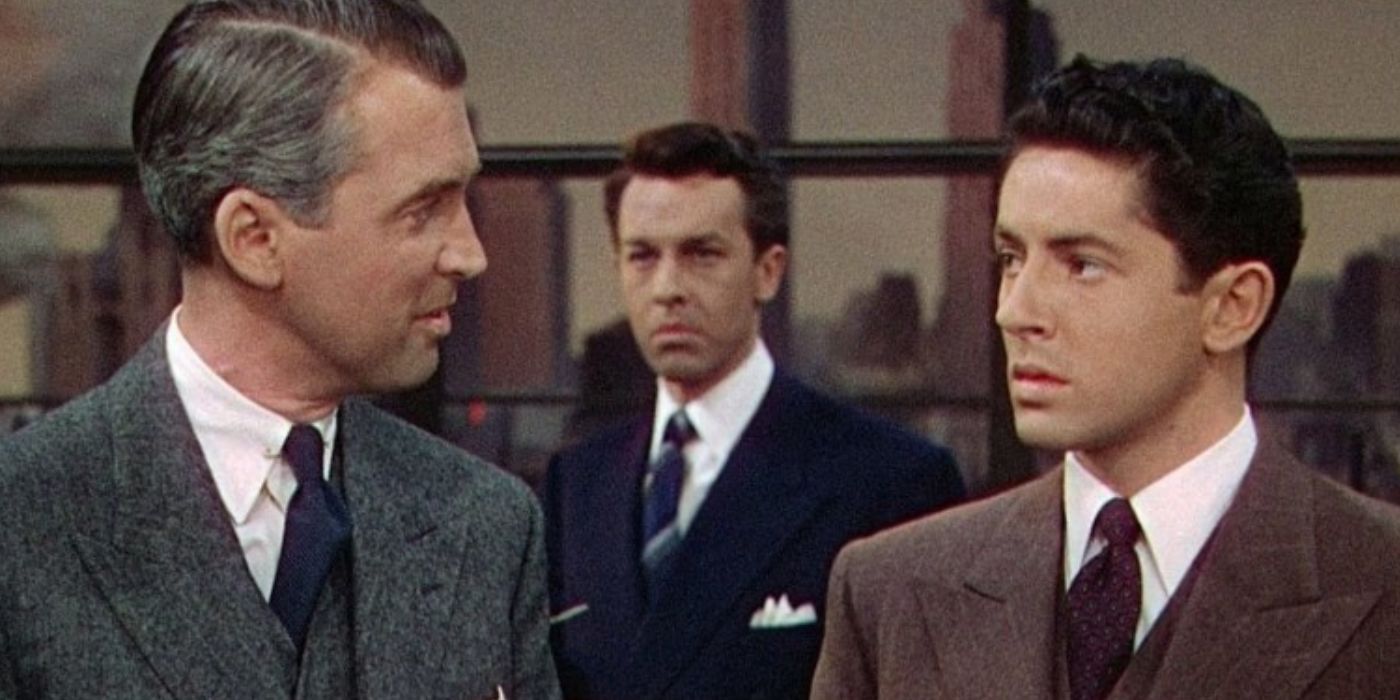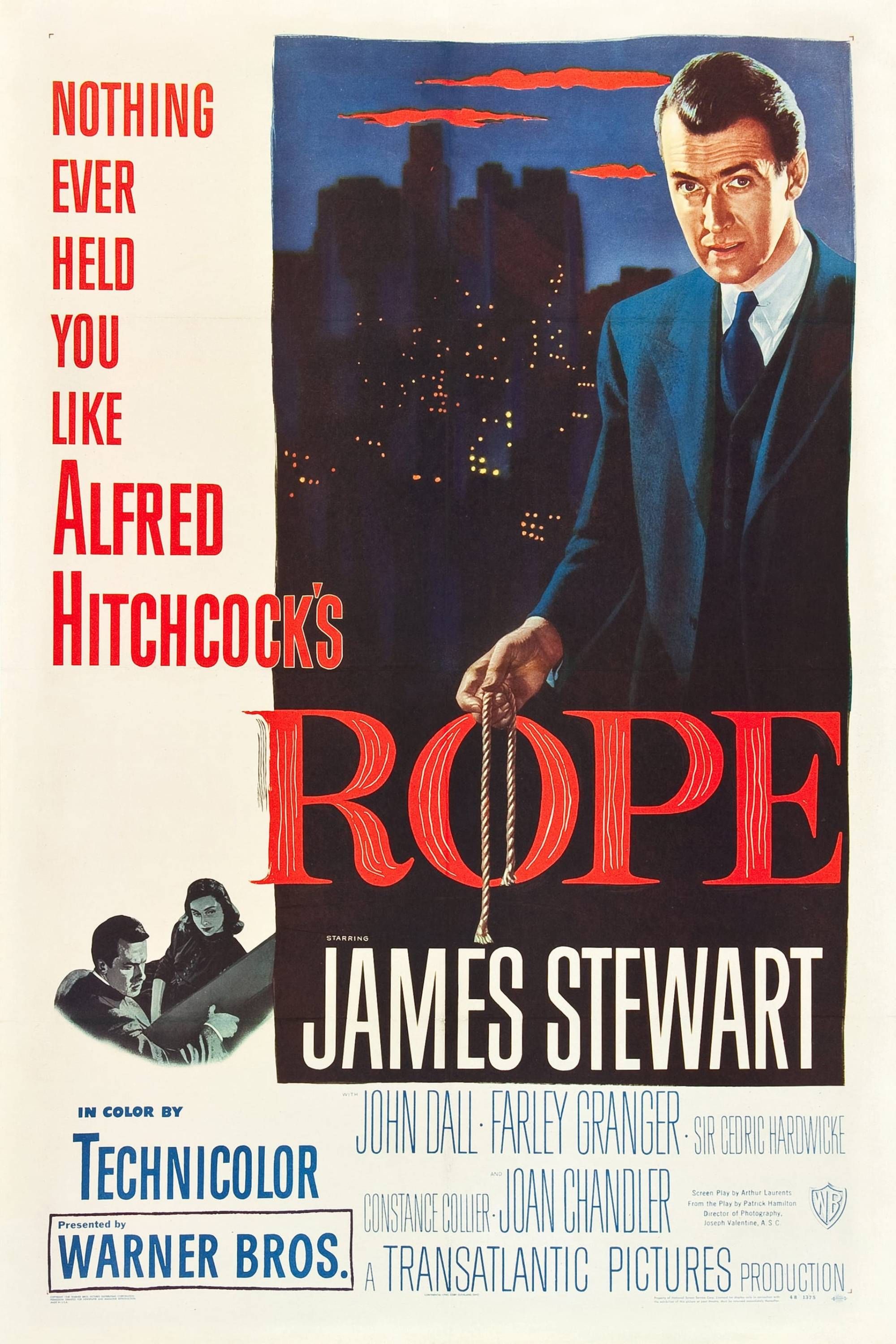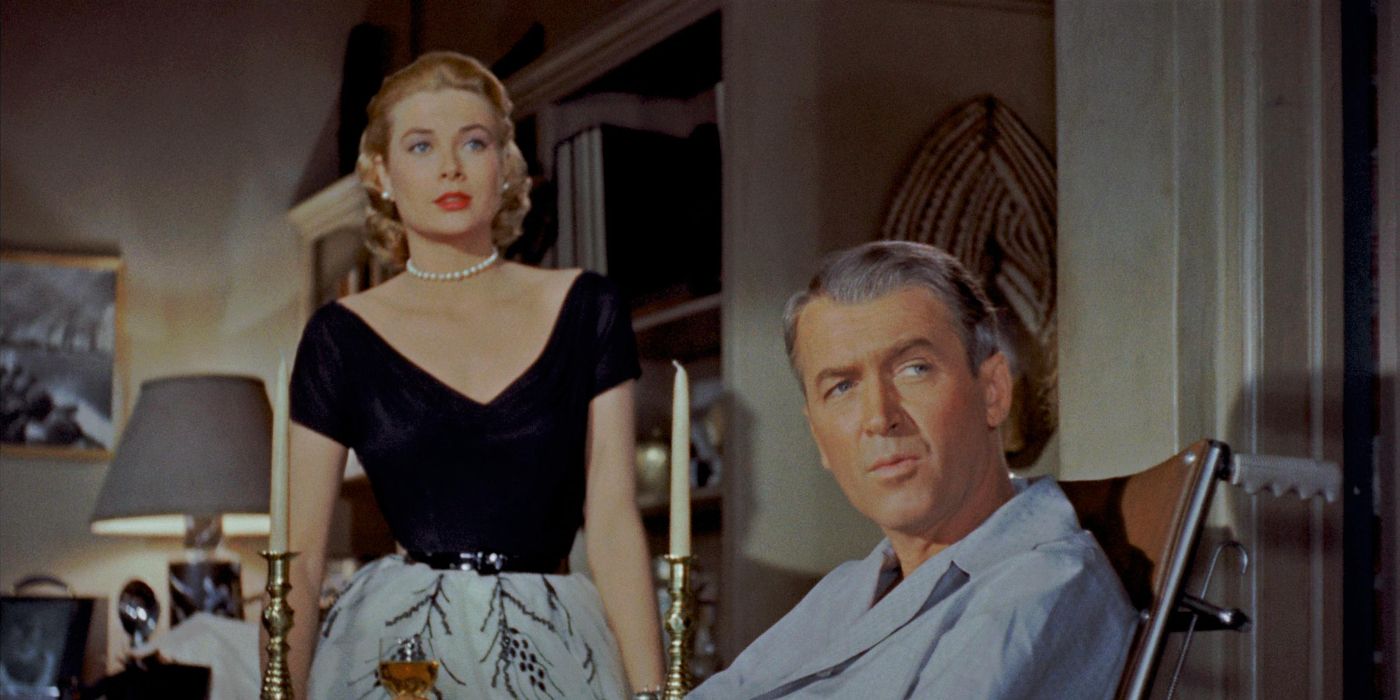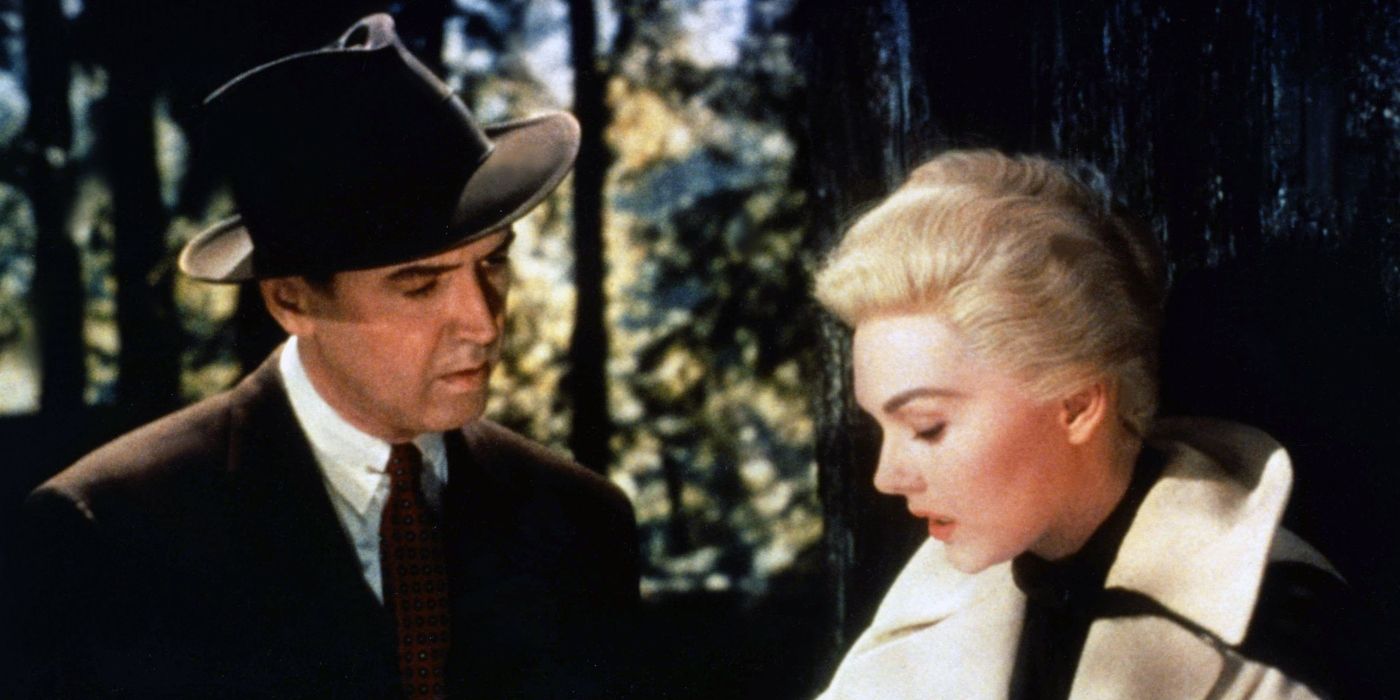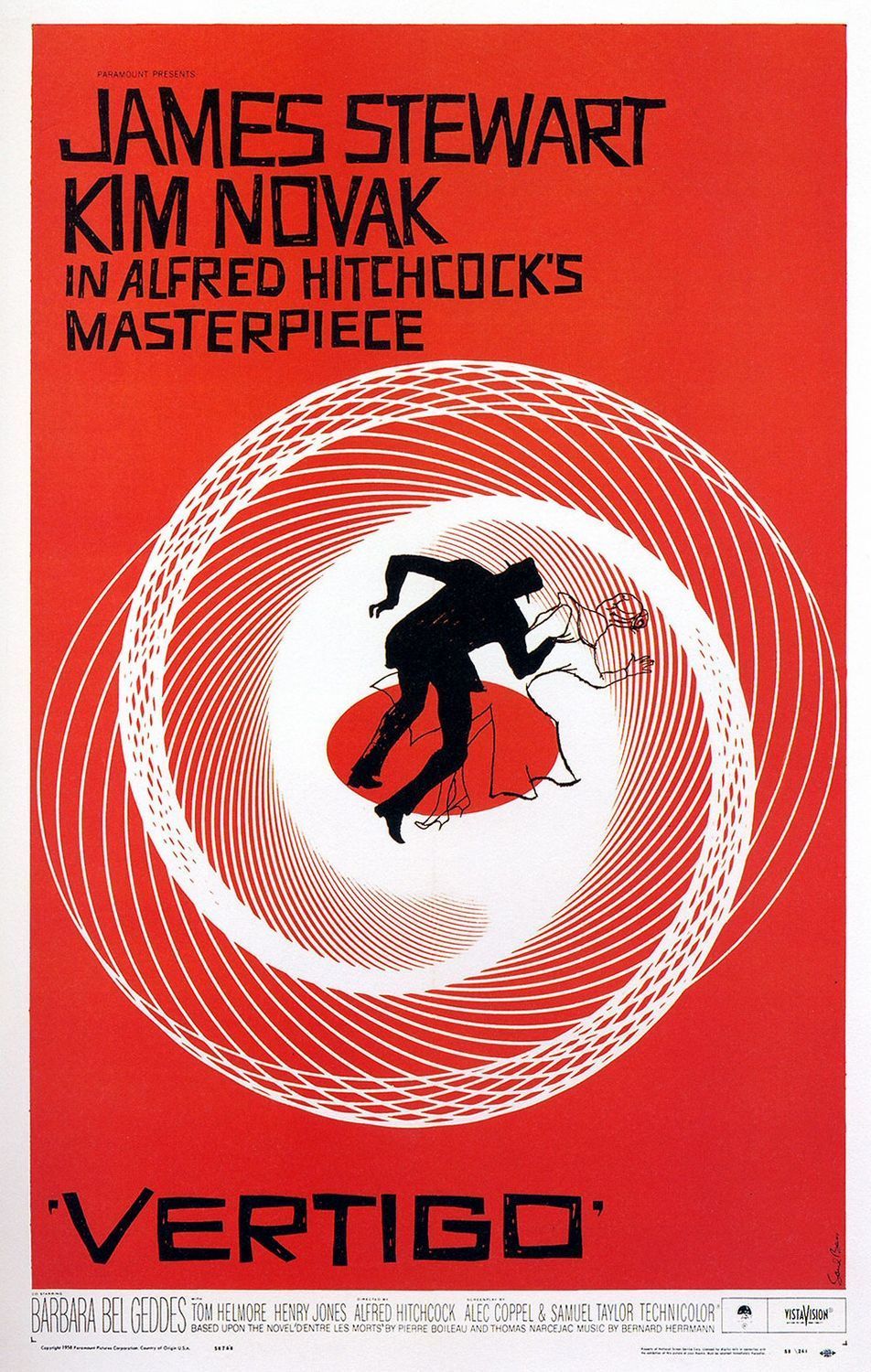Alfred Hitchcock was one of the vital prolific filmmakers throughout Hollywood’s Golden Age who labored on quite a few events with an array of iconic stars of the silver display screen, resembling Cary Grant, Grace Kelly, and Joan Fontaine. Out of all of the notable names that the Grasp of Suspense collaborated with, James Stewart is one Hollywood legend who ranks as one of many director’s finest main males.
Hitchcock and Stewart labored on 4 movies collectively, every vastly completely different from the opposite in their very own distinctive means, and are thought-about to be a number of the biggest contributions to basic cinema. All of their movies stand to be very important in each their careers, permitting Hitchcock to experiment with settings and digital camera methods and permitting Stewart to work outdoors his wheelhouse, exploring extra darkish and sophisticated roles. From Hitchcock’s remake of The Man Who Knew Too A lot, to the notorious psychological thriller, Rear Window, that is each Hitchcock and Stewart film, ranked.
4
‘The Man Who Knew Too A lot’ (1956)
Starring Doris Day, Edna Finest, and Daniel Gélin
Hitchcock is one in all few administrators who remade his personal work and, in 1956, he remade his 1934 crime thriller, The Man Who Knew Too A lot, with vital alterations to the plot. Stewart stars alongside Doris Day as a married couple, Dr. Ben and Josephine McKenna, who, together with their younger son (Christopher Olsen), go on trip in Morocco, the place they meet a seemingly pleasant man, Louis Bernard (Daniel Gélin). When Louis is chased by police and stabbed within the market, he tells Ben together with his last breath about an assassination plot earlier than dying, finally placing the American household in grave hazard.
After the immense success of Rear Window, Stewart reunited with Hitchcock for The Man Who Knew Too A lot, incomes immense reward from audiences and critics for his powerhouse efficiency. In 1941, Hitchcock had initially considered an American remake of The Man Who Knew Too A lot, however in the long run, he primarily agreed to a remake years later as a contractual settlement with Paramount Footage. Despite the fact that the remake varies from the unique, the 1956 model remains to be one in all Hitchcock’s most thrilling films, because of a good, punched-up script, flawless performances, and a now-iconic tune, Que Sera, Sera (No matter Will Be, Will Be), carried out by Day, which received the Academy Award for Finest Unique Tune.
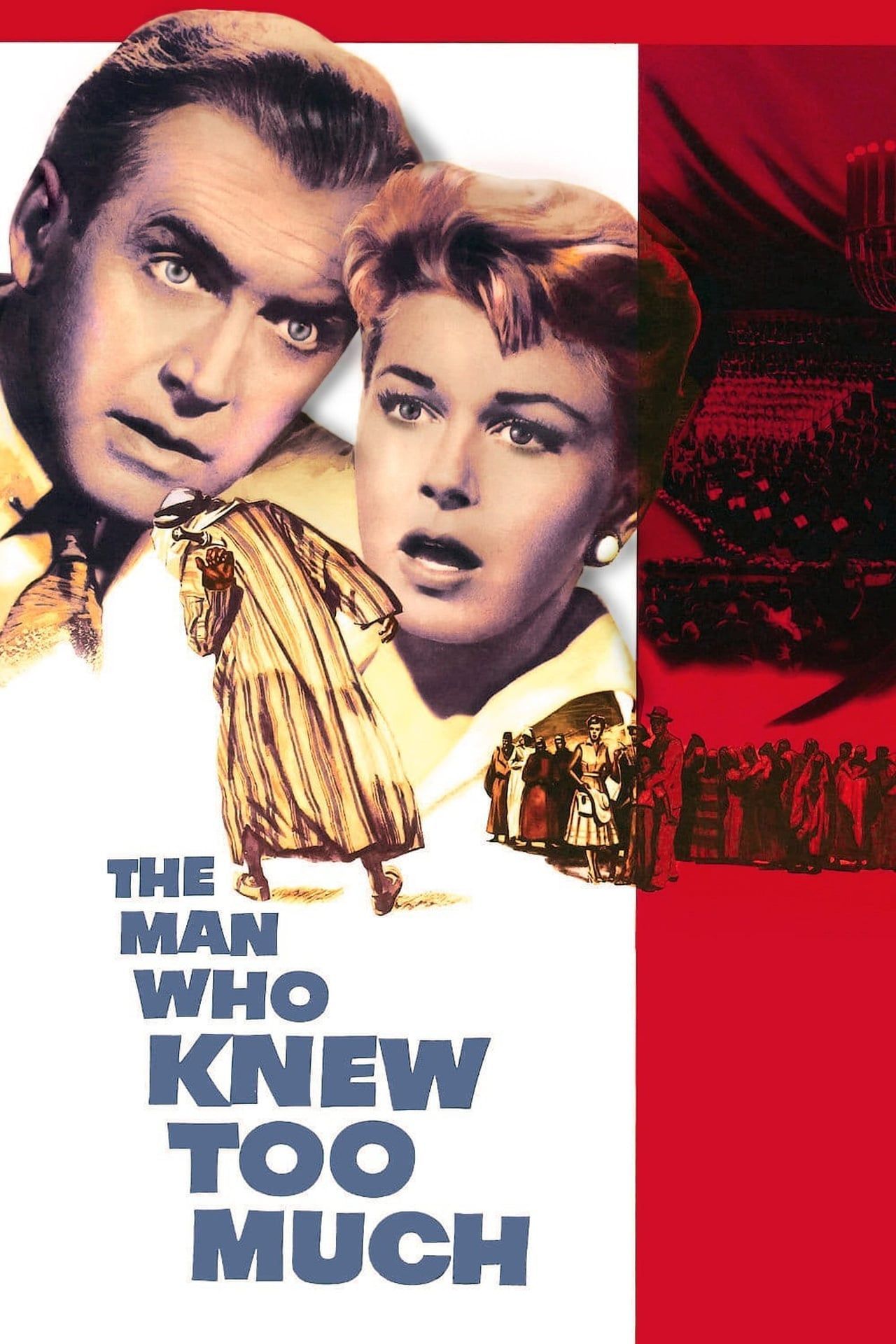
The Man Who Knew Too A lot
- Launch Date
-
Could 16, 1956
- Runtime
-
120 Minutes
3
‘Rope’ (1948)
Starring John Dall, Farley Granger, and Joan Chandler
Rope is well one in all Hitchcock’s most underrated motion pictures and showcases the director’s spectacular potential to ship a compelling felony drama set solely in a confined house with only a few gamers at hand. The movie tells the story of two mates, Philip (Farley Granger) and Brandon (John Dall) who, shortly earlier than a cocktail party, strangle their pal and conceal his physique in a big chest which they use to set out the buffet of meals on. When the friends arrive, together with the sufferer’s fiancée (Joan Chandler) and their professor (Stewart), whose lectures impressed their twisted philosophical experiment, one finds a devilish delight of their unstated deed whereas the opposite turns into riddled with guilt and anxiousness.
Rope marked the primary collaboration between Hitchcock and Stewart and was additionally the second installment within the director’s “restricted setting” movies. Upon its authentic launch, the reviews for Rope were divided, as some recommended it as a technical tour de pressure and macabre story, whereas others felt it to be too restricted by its confined house and oversaturated with pointless plot particulars. Except for its single set, the film can be identified for its graphic opening scene which incites shock and disgust within the viewers in the direction of the lead characters. Despite the fact that Stewart is not the official lead, he does play an important function within the boys’ seemingly good crime, taking up the a part of an newbie sleuth who slowly brings their diabolical deed to gentle.
2
‘Rear Window’ (1954)
Starring Grace Kelly, Thelma Ritter, and Raymond Burr
Hitchcock casts Stewart in one other important psychological thriller, Rear Window, as a photographer, Jeff Jefferies, who has to make use of a wheelchair attributable to a damaged leg. He turns into excessively stressed and uninterested in being cooped up in his New York residence alone. In an effort to entertain himself and cross the time, Jeff begins watching his neighbors, familiarizing himself with their day-to-day routines whereas remaining unseen and hidden among the many shadows. When he witnesses a heated argument between a married couple throughout the courtyard, the spouse all of the sudden vanishes, main Jeff to consider that her husband (Raymond Burr) is behind her sudden disappearance.
Rear Window is among the many director and Stewart’s most well-known movies collectively and is one in all their all-time finest cinematic partnerships. Regardless of his character’s restricted mobility and lack of bodily motion, Stewart depends on his putting blue eyes and exact facial expressions, delivering an alluring and charming efficiency that’s thought-about to be one of many actor’s best. Hitchcock elevates the psychological components of the movie by means of the distinctive use of point-of-view pictures, which give audiences the impression of being part of the movie and an adjunct to Jeff’s newbie sleuthing. Rear Window is one in all Hitchcock’s most important films, celebrated for its detailed and vibrant courtyard, portraying an unassuming environment with a quaint backdrop that’s the splendid setting for a standard Hitchcock homicide thriller.
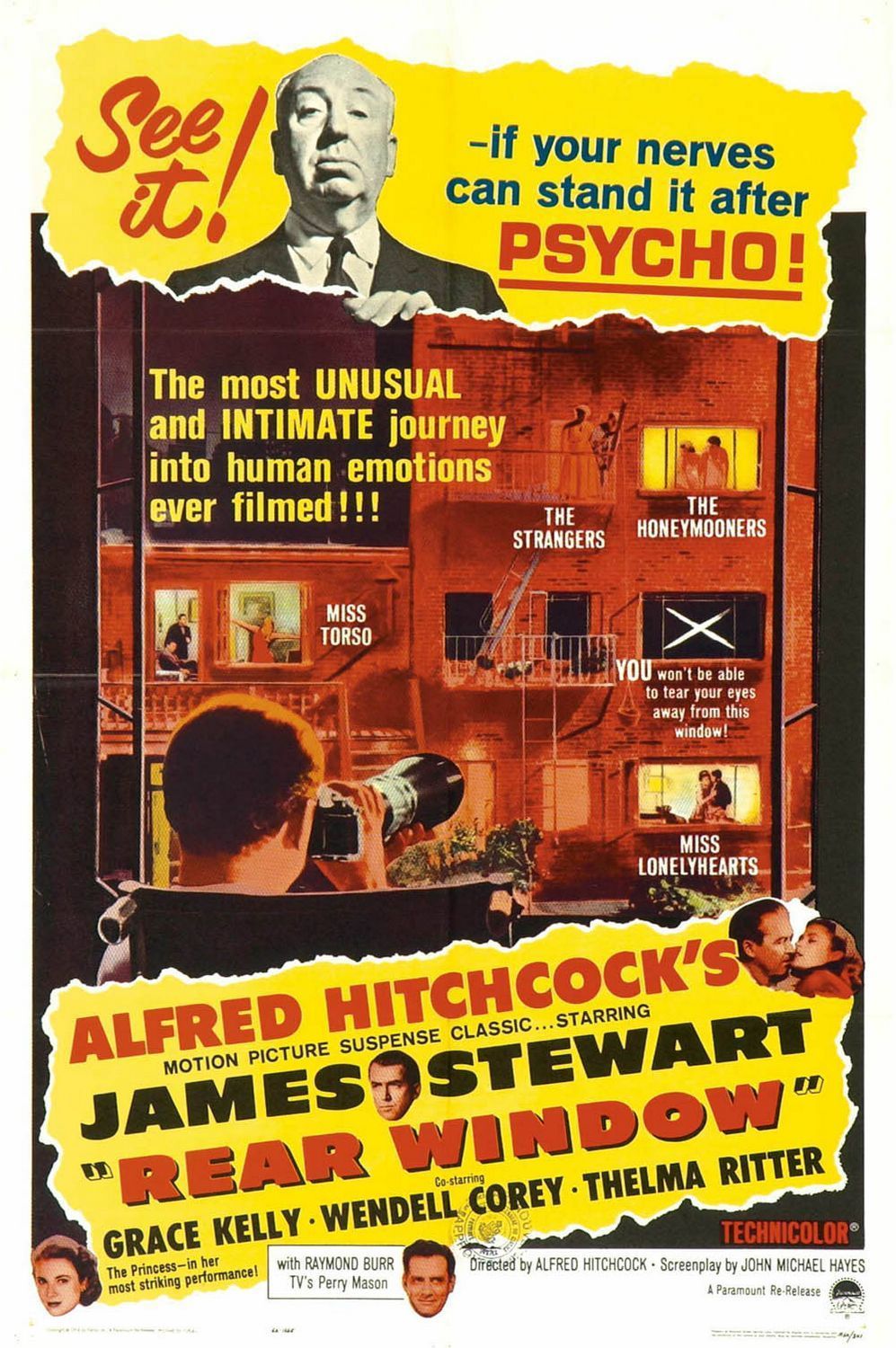
Rear Window
- Launch Date
-
September 1, 1954
- Runtime
-
112 minutes
- Writers
-
John Michael Hayes, Cornell Woolrich
1
‘Vertigo’ (1958)
Starring Kim Novak, Barbara Bel Geddes, and Tom Helmore
Stewart takes on his most complicated Hitchcock roles as a retired San Francisco police officer, John “Scottie” Ferguson, who, after an incident on the job, now suffers from a extreme concern of heights accompanied by debilitating vertigo. In the future, Scottie is requested by an previous pal to observe and report on his spouse, Madeleine (Kim Novak), whose latest erratic habits has brought on him to turn out to be involved for her security. Ultimately, a romantic attraction grows between Scottie and Madeleine, however regardless of this newfound romance, Madeleine’s habits worsens. When Scottie fails to save lots of Madeline, he falls right into a deep despair till he crosses paths with a lady who reminds him of Madeleine, main him to develop an intoxicating obsession over molding her into his misplaced love.
Vertigo is considered Hitchcock’s biggest movie and is an important psychological thriller that facilities round a person’s pygmalion-type fixation and options an sudden twist of occasions that may be a profound testomony to Hitchcock’s spellbinding storytelling. The movie was a revolutionary achievement for Hitchcock, who cultivated the definitive psychological expertise by means of using shade, trick angle pictures, and the dolly zoom, making Vertigo the primary movie to characteristic the in-camera impact, which distorts the traditional visible notion of the viewers. Stewart delivers a layered efficiency that demonstrates his versatile vary and expertise as a dramatic performer, pulling audiences into his character’s elaborate line of pondering and inescapable trauma that leaves an unsettling however fascinating impression on the viewer. Regardless of preliminary combined evaluations, Vertigo took the psychological thriller style to groundbreaking heights with its revolutionary digital camera methods and a stellar efficiency by Stewart, deeming it to be the duo’s finest and most influential manufacturing.
